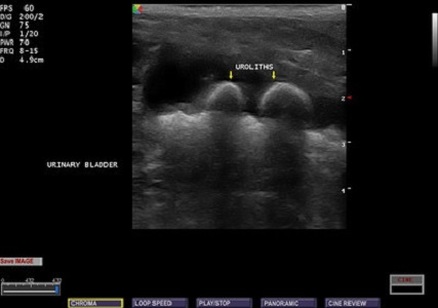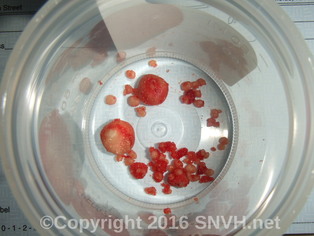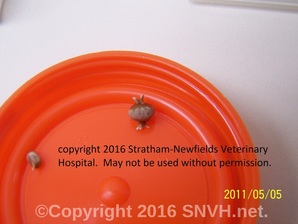Diagnosing Urinary Stones with Ultrasound
|
Urolithiasis (urinary stones) is a common condition responsible for lower urinary tract disease in dogs and cats. Ultrasound's ability to visualize structures surrounded by fluid makes imaging a valuable tool for diagnosing kidney and bladder dysfunction. Many common problems can be detected early, allowing for more successful treatment.
To the left is an ultrasound image revealing the presence of bladder stones. Some stones are radiolucent and do not show up on an x-ray; hence ultrasonography is a vital diagnostic tool for identifying kidney and bladder dysfunction. Ultrasound is a painless, non-invasive way of confirming the diagnosis of bladder stones and getting your pet on the road to recovery. |



